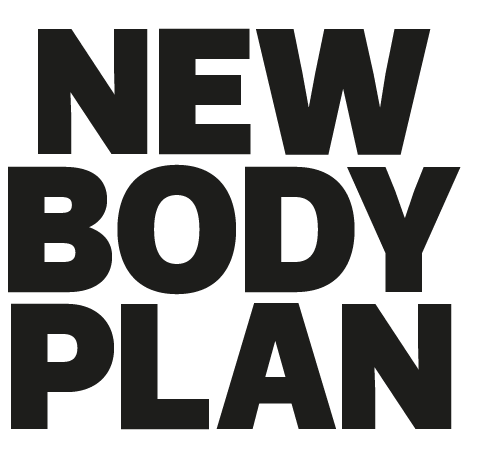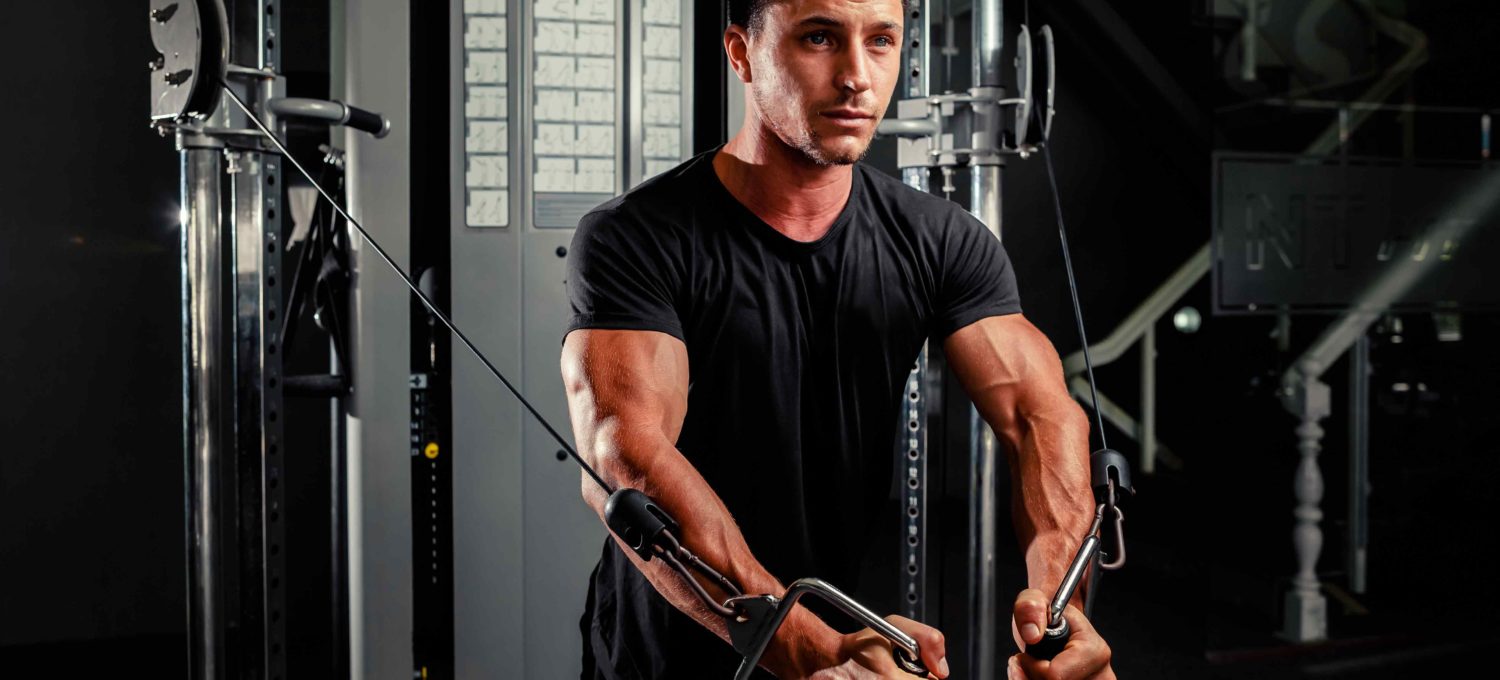Build bigger, stronger and more defined muscles at the gym with cable machines
Welcome to the New Body Plan complete guide to gym cable machines. Use it to discover everything you need to know about your gym’s cable machines and how you can use them better to pack lean muscle mass on your chest, back, shoulders, arms and abs to transform how you look with your shirt off!
Find your perfect fat-loss plan!
Take the New Body quiz!
In this article:
Cable machines overview
The benefits of using cable machines
Cable machines FAQ
What is a cable machine?
What are the different types of cable machine?
How do cable machines work?
Are cable machines good for building muscle?
Why should I use cable machines?
Cable machine advantages and disadvantages
The best cable machine chest moves
The best cable machine back moves
The best cable machine shoulder moves
The best cable machine triceps moves
The best cable machine biceps moves
The best cable machine abs moves
Cable machines overview
Cable machines can be found in any decent gym. But they’re among the least appreciated piece of weight training equipment. They’re often tucked away in a corner and only called into action for a few lazy sets of cable triceps pressdowns or cable biceps curls at the end of a workout.
But these clever machines are one of the most valuable body-transforming training tools at your disposal if you want to add muscle fast. That’s why cable moves play a major part in all our New Body Plan gym-based training programmes.
In this Complete Guide to Cable Machines we’ll reveal all you need to do so you can quickly and effortlessly incorporate more cable moves into your workout. Then you’ll sculpt the bigger, stronger and more defined physique you want sooner.
We begin with the big benefits of using cables. Then we go into more detail about what they are and, how to use them. And then we detail all of our favourite cable machine moves that you can use to transform your body.
The big benefits of using cables
Here are some of the main reasons why cable moves should feature in your gym training plan if you want to build bigger, stronger and more defined muscles:
• they place constant tension on your muscles through both the lifting and lowering phase of each rep, unlike dumbbells, barbells and other gym machines, to work your muscles both smarter and harder
• you can change the handle attachment to use multiple grips and hand positions to work the target muscle or muscles is slightly different ways to maximise muscle growth
• you can quickly and easily adjust the weight you’re lifting, making them perfect for drop sets and other muscle-building set-extending strategies
• you can work all the major muscle groups of your body using just this one bit of gym kit
• they allow you to train your muscles, especially those of your upper body and abs, through unique movement patterns, ranges of motion, and planes of direction that’s not possible to replicate with free weights or machines, to force your muscles to grow bigger and stronger
• they are great for beginners to safely learn how to perform key exercises before using dumbbells, barbells and more complex equipment
• they can be used post-injury to slowly and safely strengthen and improve weakened muscles or joints
• they work the small but crucial stabilising muscles of your joints for stronger and more robust joints and connective tissues, unlike fixed-path resistance machines which don’t
• they are great for experienced lifters to truly isolate one specific muscle group to provide the stimulus for greater muscle mass gains
Cable machines FAQs
Here are the answers to the most common training questions we get about cables and some of the key exercises
What is a cable machine?
A cable machine, like every other piece of weight-training equipment, has one simple purpose: to help you build bigger and stronger muscles. The big difference between cables and the other main weight-training kit in gyms (free weights and resistance machines) is that the weight you lift is positioned in a stack inside the machine, and is attached to a wire that runs through a pulley system.
Using a carabiner you clip different handles and attachments to the other end of the wire. This allows a variety of grips and hand positions to work your muscles in different ways and through different movement patterns. To adjust the amount of weight you lift you place a pin into the stack at the required resistance level.
What are the different types of cables?
Cable machines come in a few varieties. The most common type is a machine with two stacks of weight plates. Each has its own wire-and-pulley system that stand side-by-side and are joined together by an overhead connecting bar (which often has chin-up or pull-up handles built in to it).
You can use one weight stack by itself, typically to do isolation, or single-joint, exercises such as cable rope triceps press-downs. Or you can stand in the middle of the machine and use both weight stacks at the same time, typically for compound, or multi-joint, exercises such as cable crossovers.
Some cable equipment has the pulley at the top of the machine. Some have the pulley at the bottom of the machine. The best machines have an adjustable pulley that can be moved and fixed at various slots up and down the bar.
Some smaller gyms might only have single-stack cable equipment. These are cheaper and take up less space, but are still very useful training tools.
How do cable machines work?
You attach a handle to the wire loop on one or both sides of the machine, stick the pin the weight stack to select your level of resistance, get into position then start lifting!
But there’s more to them than simply being just another option to work your muscles. Unlike free weights (dumbbells, barbells, EZ-bars, kettlebells, or weight plates) and fixed-path resistance machines (which includes the lat pulldown, leg press, chest press, Smith machine and many others), the cable machine works your muscles in a different way to promote hypertrophy (muscle growth).
Are cables good for building muscle?
Yes – they are fantastic for building bigger muscles! Cables places constant tension on your muscles during the lifting and lowering phase of every rep. So there is constant muscular tension for the duration of your entire set. That doesn’t happen when you use free weights when there’s only tension during the lifting stage of each rep.
And in contrast to fixed-path resistance machines, where the movement pattern is completed locked so your smaller stabilising muscles aren’t required to offer support to main movement, they are needed with cable machine moves to provide injury-preventing support and stability.
Also, the cable machine allows you to perform certain moves in a very specific way to work your muscles through ranges of motion you simply can’t replicate with other equipment.
Examples include working your chest and shoulders through the cable crossover. Hitting your shoulders, chest and back in one move, as with the cable-arm straight-arm pulldown. Training the middle of your back, rear shoulders, and rotator cuff when doing cable face-pulls. Or helping to build bigger and more defined arms through the cable rope triceps pressdown and cable rope biceps curl.
Therefore, cable machines moves offer unique advantages – and results – and so should be included in any quality gym-based training programme.
Why should I use cables?
Whether you’re new to the gym, or only just beginning to lift weights, or coming back from an injury, cable machines are a fantastic way to learn (or remaster) the key movement patterns of all the major pushing, pulling and rotational exercises is a safe and controlled way.
You can use the machine to build muscular size and strength, a better mind-to-muscle connection for faster progress, and greater confidence on the gym floor to advance to more complicated equipment and exercises.
Cable machines can also be used in other important ways, such as to strengthen your small but crucial stabilising and muscles, and improving muscle flexibility and range of motion, because they can be used in stretching routines, unlike most other weight-lifting equipment.
Are there other advantages to using cables?
There are plenty of pros to incorporating more cable machines into your weight-training programme. One is that they place equal tension on the working muscle or muscles during the entire lifting and lowering phase of each rep in a way that free weights and other machines don’t, which forces your muscles to work harder during every reps to stimulate a greater muscle growth response.
The ability to attach many different types of handle means you can use it for a wide variety of pushing and pulling exercises to work the muscles of your upper body and legs in unique ways, and they’re also very good for direct abs works, specifically rotational movements to work your deep underlying core muscles and obliques.
The weight stack and pin also makes it incredibly easy to quickly adjust how much weight you lift, making cable machine moves fantastic for drop sets and other set-extending strategies to build muscle faster.
Are there downsides to using cables?
Most gyms might only have one cable machine, so you might not always be guaranteed the chance to use it, or at least have to wait for your turn.
A lot of upper-body cable machine exercises involve a significant range of motion of the shoulder joint, which is the most delicate and complex joint in the body, so you should always start with a light weight and prioritise perfect form and moving through a full range of motion to work the muscles effectively and safely.
The best cable machine exercises
Here’s our list of some of the very best cable moves for building a broader chest, a stronger back, a wider set of shoulders, bigger and more defined arms, and a rock-hard six pack!
The best cable machine chest moves
Cable chest press
Cable flye
Cable crossover
Low-cable crossover
Read our complete guide to the best cable chest exercises!
The best cable machine back moves
Cable straight-arm pulldown
Cable lat pulldown
Cable seated row
Cable reverse flye
Low-cable rear delt flye
Read our complete guide to the best cable back exercises!
The best cable machine shoulder moves
Cable face-pull
Cable lat raise
Cable front raise
Cable external rotation
Cable internal rotation
Read our complete guide to the best cable shoulder exercises!
The best cable machine triceps moves
Cable rope pressdown
Cable EZ-bar pressdown
Cable overhead triceps extension
Single-arm cable triceps press down
Read our complete guide to the best cable triceps exercises!
The best cable machine biceps moves
Cable EZ-bar bar biceps curl
Cable rope hammer curl
Double-cable biceps curl
High-cable biceps curl
Read our complete guide to the best cable biceps exercises!
The best cable machine abs moves
Cable crunch
Cable reverse crunch
Cable Russian twist
Low cable woodchop
High cable woodchop
Read our complete guide to the best cable abs exercises!
To find your perfect plan, take the New Body quiz!
Take the New Body quiz!
Burn fat and lose your belly with the best cardio for weight loss
How to use the chest press machine to build a bigger and stronger chest
7 ways to eat for fat loss and get a leaner and stronger body

